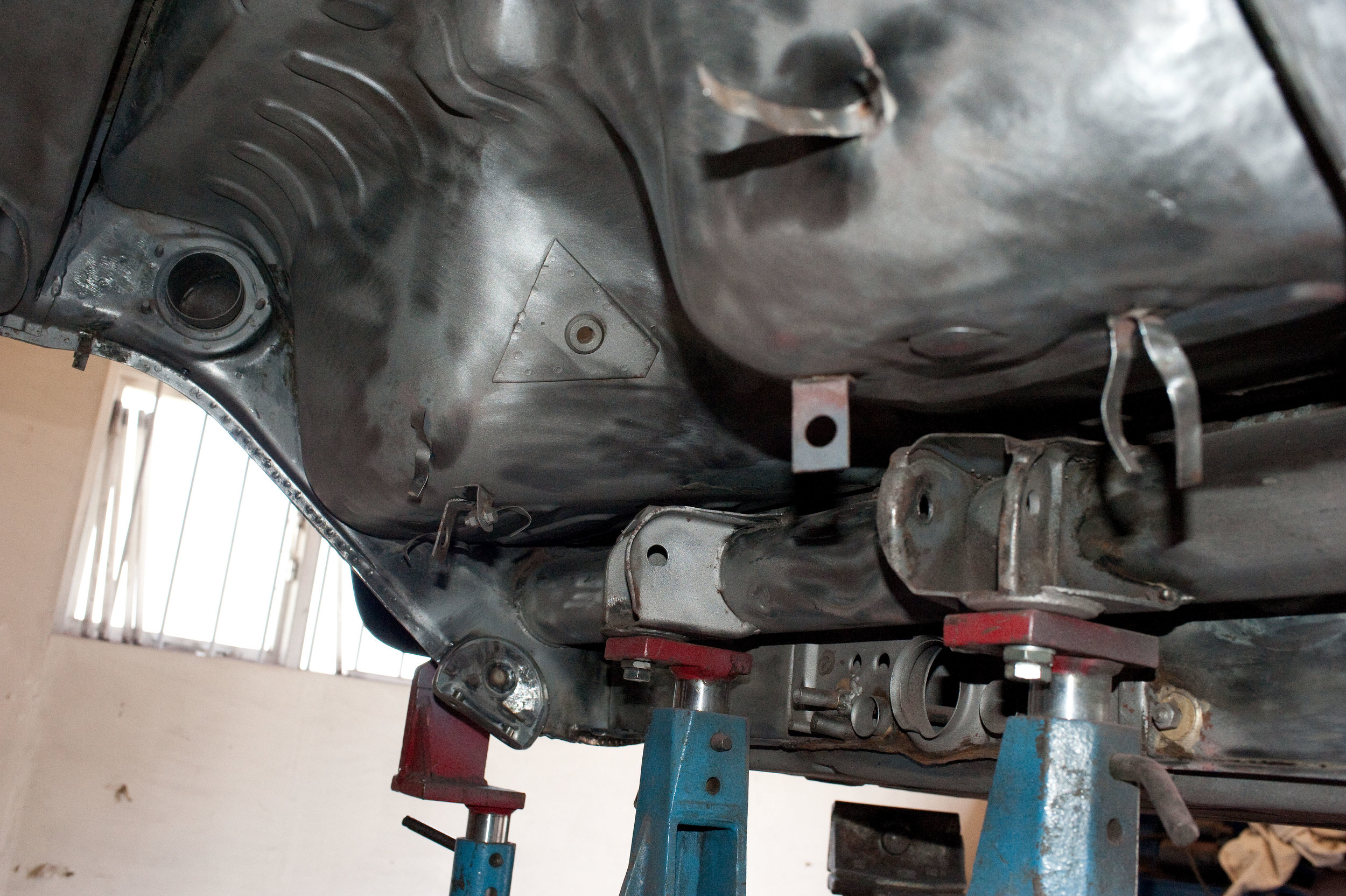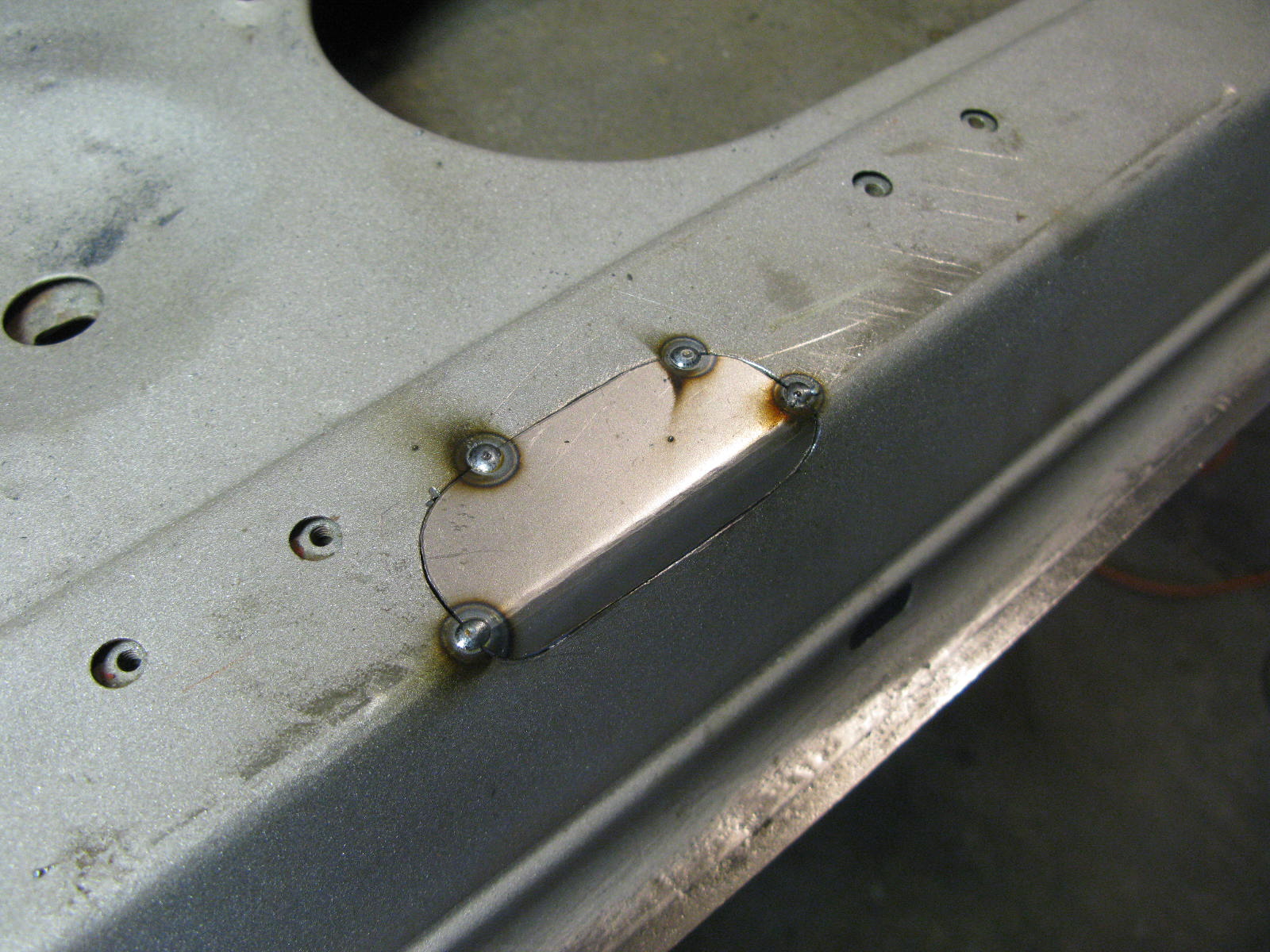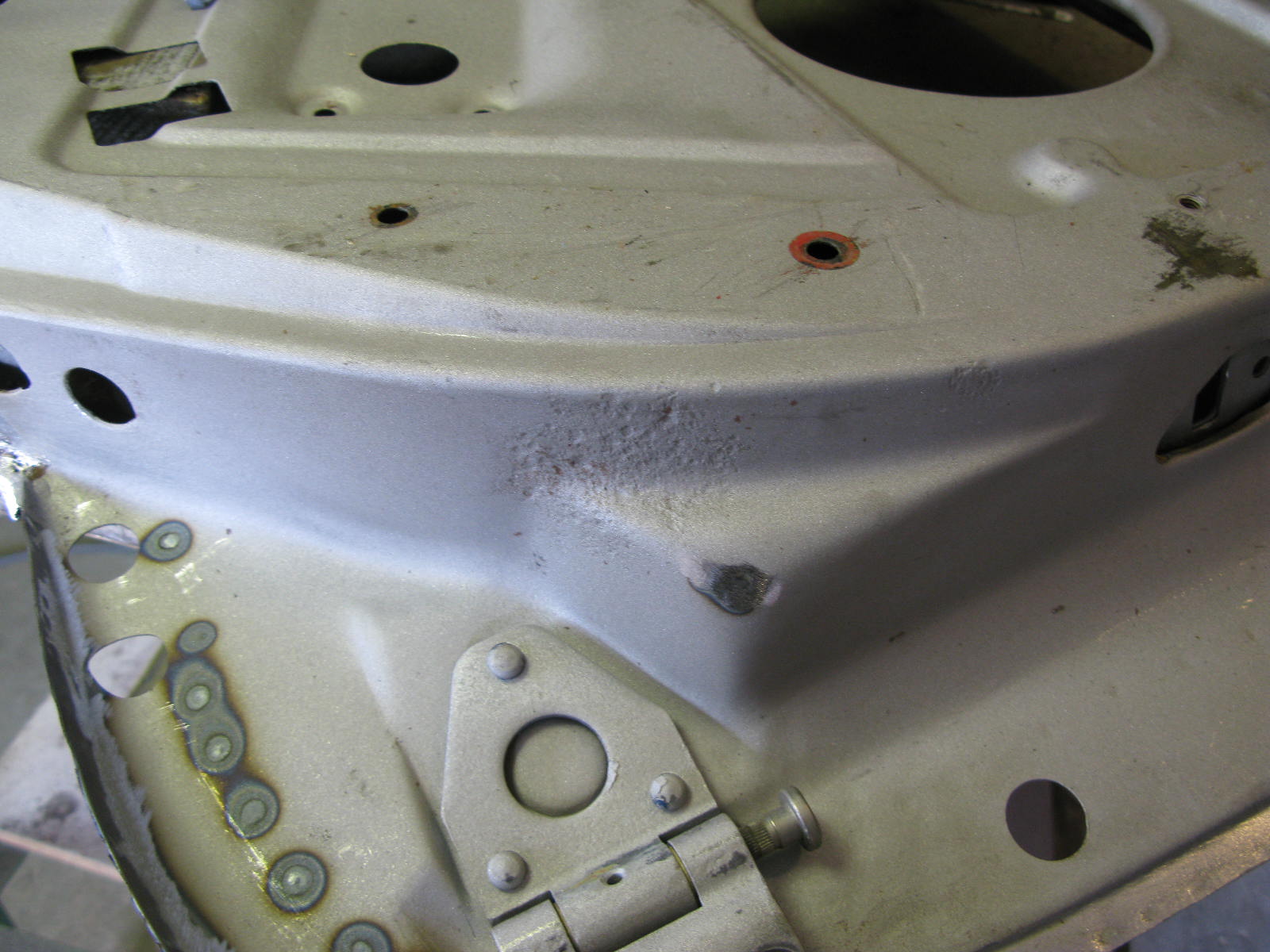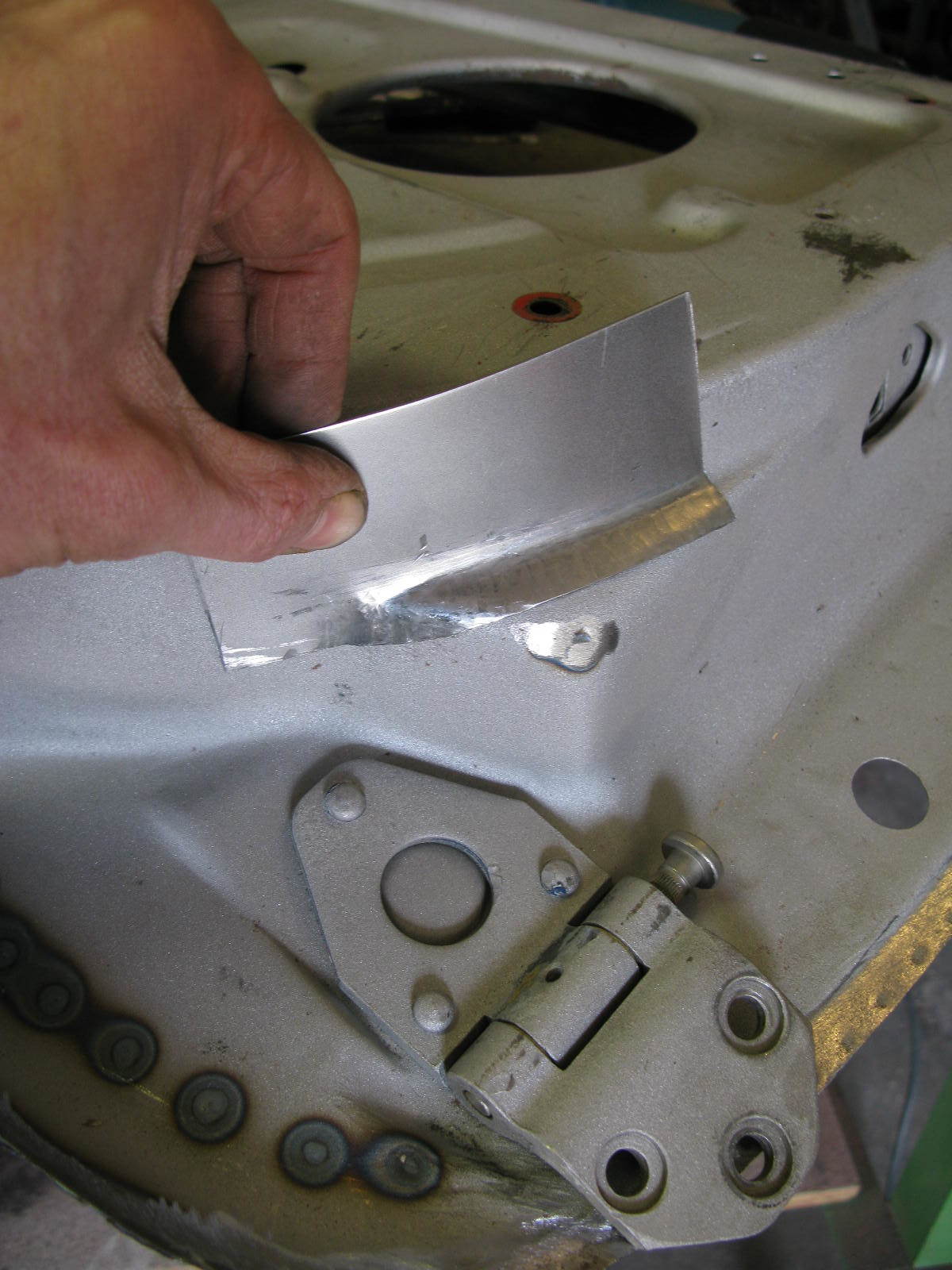I think we have fully established on this build that anything with a layer of primer on it must be assumed to be crappy.
Nevertheless, today's nasty surprise was actually surprising. Surely the bonnet, which has been sitting there innocuously in its grey primer for 2+ years, looking for all the world like a new one, was above suspicion?
Er, no... This morning's 07:25 email from Barry read as follows:
Bad news on the bonnet I'm afraid, it's toast, or at least is as far as a high standard restoration like yours is concerned.
It's been well dented, and poorly pulled out. Probably more seriously, it's got a nasty pitting to much of the area I've stripped, possibly it's been crudely repaired and then left in bare filler in the damp? Either way the conclusion is the same, we need a new bonnet.
Balls. Another £1560.24 to Porsche.
Here's how that cautionary tale looks in photographic form.
Bonnet, as bought (with car):
















































































































































































